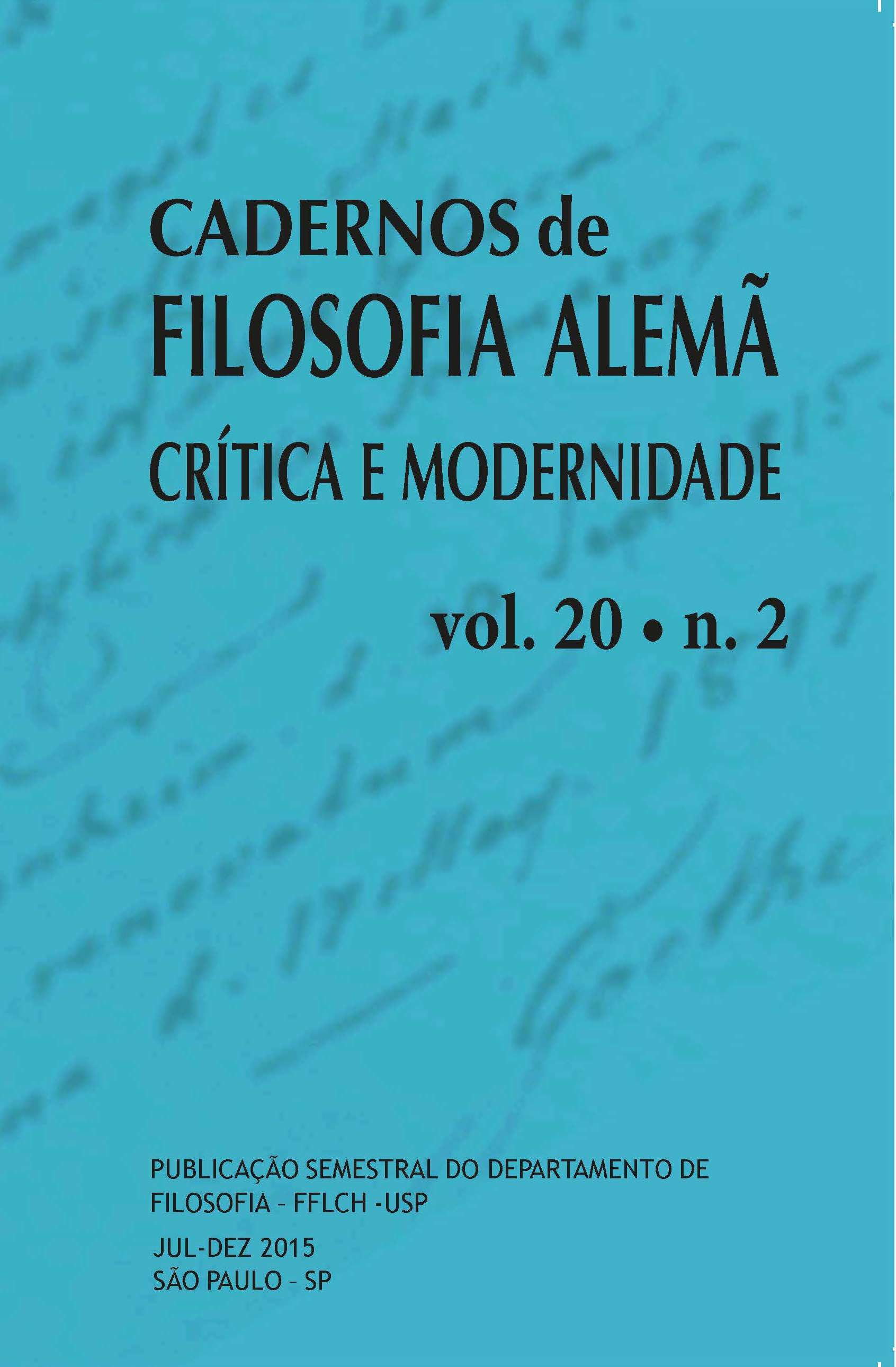On the claim “being that can be understood is language”: hermeneutics as philosophical theory
DOI:
https://doi.org/10.11606/issn.2318-9800.v20i2p157-178Keywords:
Gadamer, language, hermeneutics.Abstract
In this paper we attempt to think about the Hans-Georg Gadamer’s claim: “being that can be understood is language”. Substantially, this is a criticism to the traditional conceptions of language and at the same time a change in the purposes of Hermeneutics. There are a lot of interpretations about this claim, but some aspects of it were not explored. The relevance of such study is to understand Gadamer’s Hermeneutics und its contribution to Philosophy.Downloads
References
APEL, K-O. Transformação da Filosofia I: Filosofia Analítica, Semiótica, Hermenêutica. Tradução de Paulo Astor Soethe. 2a ed. São Paulo: Edições Loyola, 2005.
ARISTÓTELES. “Periérmeneias”. In: Organon. Tradução de Pinharanda Gomes. Lisboa: Guimarães Editores, 1985, pp.123-128.
DILTHEY, W. “Origens da hermenêutica”. In: Textos de hermenêutica. Tradução de Alberto Reis. Lisboa: Rés, 1984, p.167.
GADAMER, H-G. Die Lektion des Jahrhunderts: ein Interview von Riccardo Dottori. Münster: Lit, 2002.
___________. Hermeneutik im Rückblick. Gesammelte Werke, Bd. 10. Tübingen: Mohr Siebeck, 1999, p.328.
___________. O problema da consciência histórica. Tradução de César Duque Estrada. Rio de Janeiro: Editora Getúlio Vargas, 1998.
___________. Vernunft im Zeitalter der Wissenschaft: Aufsätze. 3. ed. Frankfurt am Main: Suhrkamp Verlag, 1991.
___________. Wahrheit und Methode: Ergänzungen; Register. 2. ed. Gesammelte Werke, Bd. 2. Tübingen: Mohr Siebeck, 1993.
___________. Wahrheit und Methode: Grundzüge einer philosophischen Hermeneutik. 6. ed. Gesammelte Werke, Bd. 1. Tübingen: Mohr Siebeck, 1990.
GRONDIN, J. Hermeneutische Wahrheit? Zum Wahrheitsbegriff Hans-Georg Gadamers. Weinheim: Beltz Athenäum Verlag, 1994.
HABERMAS, J. Dialética e hermenêutica. Tradução de Álvaro Valls. Porto Alegre: L&PM, 1987.
___________. RORTY, R.; VATTIMO, G. (et.al.). “El ser que puede ser compreendido es lenguage”. Homenaje a Hans-Georg Gadamer. Madrid: Editora Sintesis, 2003.
HEGEL, G. W. F. Phänomenologie des Geistes. Stuttgart: Reclam, 2003.
HEIDEGGER, M. Conferências e escritos filosóficos. 2. ed. Tradução de Ernildo Stein. São Paulo: Abril Cultural, 1983
___________. Ensaios e conferências. 3.ed. Tradução de Marcia Sá Cavalcante Schuback. Petrópolis: Vozes, 2006.
___________. Sein und Zeit. Tübingen: Max Niemeyer Verlag, 1967.
HUSSERL, E. Lições para uma fenomenologia da consciência interna do tempo. Tradução de Pedro M. S. Alves. Lisboa: Imprensa Nacional, 1994.
SCHLEIERMACHER, F. D. E. Hermenêutica e crítica. Tradução de Aloísio Ruedell. Rev. Paulo R. Schneider. Ijuí: Editora Unijuí, 2005.
___________. Hermenêutica: arte e técnica da interpretação. 5.ed. Tradução de Celso Reni Braida. Bragança Paulista: Editora Universitária São Francisco, 2006.
VATTIMO, G. Histoire d’une virgule. Gadamer et le sens de l’être. Revue Internationale de Philosophie, France, v. 54, n. 213, 2000.
Downloads
Published
Issue
Section
License
Information and conceptions on the texts are complete responsibility of the authors.
All the articles submitted before July 5th 2018 and those published after July 2021 are licensed under a CC BY-NC-ND license – except those published between the aforementioned dates, which are under the CC BY-NC-SA license. The permission for the translation of the material published under the license CC BY-NC-ND by third parts can be obtained with the consent of the author.
Open access policies - Diadorim
Rules applied before July 5th 2018:
Presenting a submission to our Editorial Board implies granting priority of publication for “Cadernos de filosofia alemã”, as well as transferring the copyright of texts (once published), which will be reproduced only with the manifest authorization of the editors. Authors keep the right to reuse the texts published in future editions of their work, without paying any fees to "Cadernos”. We will not grant the permission to re-edit or translate the texts for third parts without agreement of the author.


